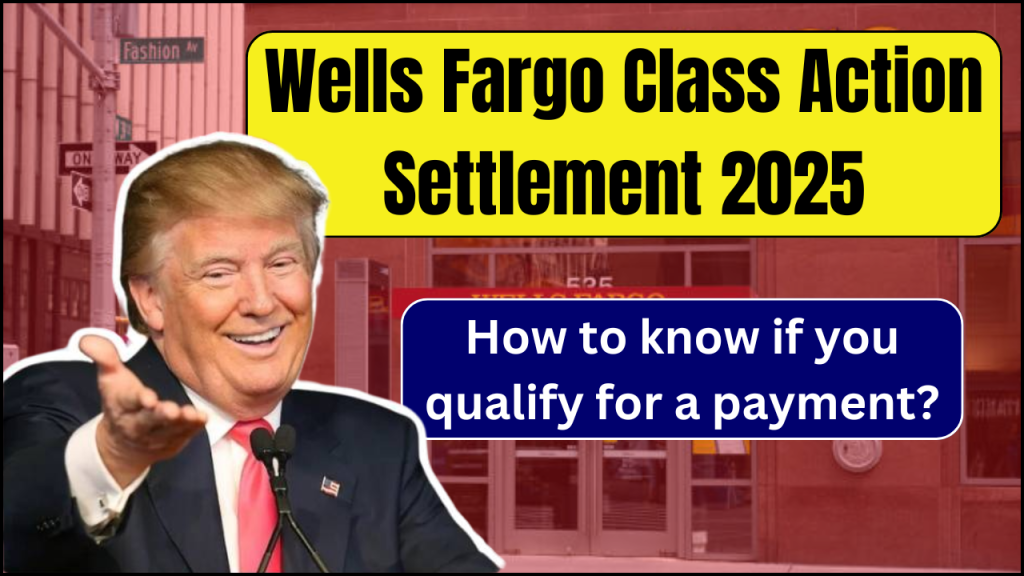
Wells Fargo, one of America’s biggest banks, is now paying billions to customers it harmed through unfair banking practices. This major settlement could mean money in your pocket if you were a Wells Fargo customer during the affected periods. Let’s break down what happened, who qualifies for payments, and how to check if you’re eligible.
What Happened at Wells Fargo?
In December 2022, the Consumer Financial Protection Bureau (CFPB) ordered Wells Fargo to pay $3.7 billion for breaking banking rules that hurt millions of customers. This money includes:
- $2 billion in direct payments to affected customers
- $1.7 billion in penalties paid to the government
The problems started becoming public in 2016 when news broke that Wells Fargo employees had created millions of fake accounts without customer permission. As investigations continued, more problems were discovered across many of the bank’s services.
Who Was Affected?
The settlement covers about 16 million customer accounts. You might be eligible for compensation if you experienced any of these issues with Wells Fargo:
Auto Loan Problems
- Your car was wrongfully repossessed
- You were charged extra fees you shouldn’t have paid
- Your insurance payments weren’t handled correctly
Mortgage Issues
- You faced a wrongful foreclosure on your home
- Your loan modification request was unfairly denied or delayed
- You were charged improper late fees
Checking and Savings Account Problems
- You were charged surprise maintenance fees
- You received unfair overdraft charges
- An account was opened in your name without your permission
Cash App Class Action Settlement 2025, Are You Eligible for Compensation?
How Much Money Can You Expect?
The amount you might receive depends on what happened to you and how badly you were affected. Here’s a simple breakdown:
| Problem Type | Typical Compensation | Number of People Affected |
|---|---|---|
| Wrongful car repossession | $4,000 minimum | Part of 11 million auto accounts |
| Wrongful home foreclosure | Potentially larger amounts | Thousands of mortgage holders |
| Unauthorized account fees | $100-$500 | Part of 5+ million deposit accounts |
Where Is the Money Going?
The $2 billion for customer compensation is divided across different types of accounts:
| Account Type | Money Allocated | Number of Affected Accounts |
|---|---|---|
| Auto Loans | $1.3 billion | 11+ million |
| Mortgages | $200 million | Thousands |
| Deposit Accounts | $500 million | 5+ million |
How to Get Your Payment
For most people who qualify, the process is simple:
- Wait for contact: Wells Fargo is responsible for identifying affected customers and reaching out directly.
- If you think you qualify but haven’t heard anything: Call Wells Fargo at 844-484-5089 (Monday–Friday, 9 a.m.–6 p.m. ET).
- If Wells Fargo doesn’t help: File a complaint with the CFPB at (855) 411-2372.
- Stay alert: Keep an eye on your bank statements and credit reports for unexpected payments or charges.
Watch Out for Scams!
The CFPB has warned about scammers targeting Wells Fargo customers. Remember:
- No legitimate person will ask you to pay money upfront to get your settlement payment
- Wells Fargo will contact you directly if you’re eligible
- Be suspicious of emails, calls, or texts claiming to help you get your settlement faster
Problems That Led to the Settlement
Unauthorized Accounts
Employees opened millions of accounts without customer knowledge or consent. This happened because workers were under extreme pressure to meet unrealistic sales targets.
Auto Loan Issues
Wells Fargo mishandled auto loans in several ways:
- Repossessing vehicles from customers who were making payments on time
- Not refunding insurance premiums when required
- Charging too much interest and adding unnecessary fees
Mortgage Problems
Many homeowners suffered because Wells Fargo:
- Wrongfully foreclosed on homes
- Delayed or denied loan modifications unfairly
- Added improper charges to mortgage accounts
Deposit Account Fees
Checking and savings account holders faced:
- Surprise maintenance fees they never agreed to
- Multiple overdraft charges for the same transaction
- Monthly service fees applied incorrectly
Wells Fargo’s Changes After the Settlement
The bank has promised to fix its practices. Some improvements include:
- Better internal systems to prevent wrongdoing
- Reduced sales targets that previously encouraged bad behavior
- Clearer information about fees and loan terms
- More customer service representatives
Government agencies continue to watch Wells Fargo closely to make sure these changes stick.
Protecting Your Money in the Future
The Wells Fargo situation shows why it’s important to stay vigilant about your finances:
- Check your statements monthly: Look for charges you don’t recognize.
- Review your credit report regularly: You can get free reports at AnnualCreditReport.com.
- Question fees: Ask your bank to explain any fee you don’t understand.
- Keep records: Save emails, letters, and notes from conversations with your bank.
- Act quickly: If you notice a problem, report it immediately.
Bottom Line
The Wells Fargo settlement represents one of the largest consumer financial penalties in history. While $2 billion is being returned to customers, the true cost of these unfair practices goes beyond money—many people lost homes, vehicles, and faced financial hardship.
If you think you might qualify for compensation, don’t hesitate to follow up with Wells Fargo directly. The settlement ensures that affected customers have a path to recovering at least some of what they lost due to the bank’s improper practices.
Remember that this settlement came about because customers spoke up about unfair treatment and government agencies took action. Your vigilance as a consumer matters, not just for your own financial health, but to hold financial institutions accountable.